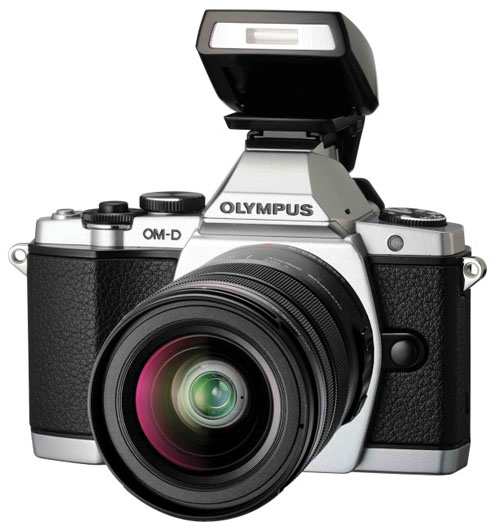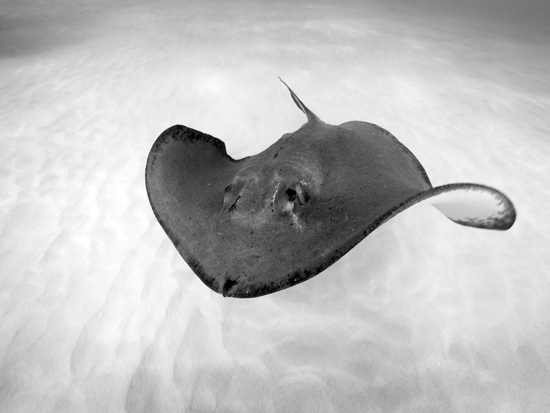Mirrorless Cameras
Mirrorless cameras with interchangeable lenses promise a bright future
By Michel Gilbert & Danielle Alary

With modern featherweight carry-on allowances and large, tendinitis-inducing camera housings, many people opt not to shoot large DSLRs. If you don’t care about the status symbol associated with the bigger/heavier ‘pro’-look cameras, there are other options that deliver excellent results.
Olympus shocked the world when it introduced its OM-D E-M5. This model, and its more potent sibling, the OM-D M-1, fall in the Micro Four Thirds (MFT) category. MFTs include both compact cameras (like the Olympus Pen) and DSLR-type cameras.
MFT sensors are smaller than APS-C DSLRs like the Nikon D5300/D7100 or the Canon EOS 70D/Rebel T3i. With a sensor 30-50 percent smaller than an APS-C sensor, the MFT reduces camera footprint and weight, while producing images that rival (and sometime exceed) DSLRs.
Phil Rudin, of Wetpixel fame, loaned us his beloved Olympus OM-D E-M5 and the matching Nauticam housing for this test. He included a pair of Inon Z-240 strobes and the 45-degree optical viewfinder he uses with this system.
With the introduction of the OM-1 in the 1970s, Olympus literally invented the lightweight SLR. Ahead of its time, the OM-1 found cult following in the competitive market of film SLRs.
Building on this concept, the company has designed a small, lightweight, interchangeable lens, electronic viewfinder camera with specs that were unthinkable less than a decade ago. At 16 megapixels, the OM-D E-M5 delivers magazine cover-shot picture quality that meets or exceeds the needs of most underwater photographers.
In terms of glass, shooters have the choice between Olympus and Panasonic brands. These are the two manufacturers that embraced the MFT standard, which incorporates a compatible lens mount.
Three lenses should suffice for most buyers: the kit zoom, a macro and a wide-angle lens. Add a land accessory strobe and you can roam the world with all your equipment neatly tucked in a vintage Banana Republic photo vest. Unless you’re flying on a puddle-jumper, a small carry-on will suffice to bring your housing and strobe on board any airplane. The camera bodies are smaller and the lenses appear miniature-sized, compared to the Panzer-type cannons found on full frame DSLRs. This spells heaven for sore backs and weary travelers.

Now let’s talk pictures
No matter which camera you bring with you, the business requirement remains the same: Image Quality (IQ).
Our comparison for this test was our ‘old’ trusted 2007 vintage D300. It lags behind newer offerings from Nikon like the D7100, but still delivers excellent image quality.
We were curious to see how the OM-D E-M5 would measure up against the DSLR performance.
After a few hours in the water with the Olympus, watching images materialize on the computer screen was a delight. There was little to complain about in terms of IQ. Colours were accurate and sharpness level was comparable to DSLRs.
The only area where we could find a difference is in low light/high ISO situations. In that case, the Olympus showed around the same noise level as our D300, a camera that is light years behind the ‘modern’ D7100 in terms of low-light performance.
Is that a reason to drop the Olympus? Of course not. Up to ISO 800 and even 1600, the OM-D E-M5 produces pictures that stand out. The gain in form factor and reduced bulk outweigh the low-light limitation. Who wants to always shoot at ISO 1600?
Nobody’s perfect but…
Like most modern image-making tools, the OM-D E-M5 offers hundreds of adjustments and tweaks; as nice as they are, they tend to complicate things. If you consider acquiring this MFT, set some time aside to learn and practice.
For those like us who prefer simplicity, Olympus engineers implemented four custom shooting preferences that are invoked at the touch of a button. ‘Myset’ 1 can be tailored for macro, while ‘Myset’ 2 affects wide-angle shooting choices.
These are the types of fast action changes that should be found in any top-level camera.
We must confess that we fell in love with the electronic viewfinder (EVF). Of course, it is rather small and using an enlarging optical viewfinder on your housing is almost a must. However, one GREAT advantage of those EVF is the instant picture review ‘in’ the viewfinder itself. No more need to take your eye off the viewfinder to look at your results. This comes as a significant bonus on top of all the other assets offered by this camera.

Nauticam NA-EM5 housing
The aluminum-built NA-EM5 housing offers full control over the OM-D E-M5 camera. The compact size of the enclosure could almost fit in cargo pant pockets. The strobe handles and tray are optional, but only because you’re buying them separately. They are a must for anyone who’s a serious shooter.
The shutter release is a button type, as opposed to the lever type found on larger housings. That’s okay if you don’t use the handles, but if you do, you’ll understand the limitations. It’s a small price to pay, though, for the convenience of a miniature-sized housing.
Of course, those diving with coldwater mitts or similar gloves will find some controls harder to manipulate. However, once you have control over shutter speed and aperture, along with a couple other things, the rest see almost like niceties.
Although you could use the small optical viewfinder mounted on the housing, we strongly suggest buying the 45-degree optical viewfinder sold separately. This will render perfect size images even when viewed through your mask. It’s an additional expense, but this purchase will make you much happier in the long run.
In terms of optics, Nauticam offers domes and flat ports to suit any lens you may want to use underwater, and they’re small too!
The future is here
One day, most enthusiasts will use cameras like the OM-D E-M5. Prism viewfinders will sit in museums or on professional cameras.
If you’re thinking about buying an interchangeable lens camera that handles like a DSLR but weighs like a compact, then the Olympus OM-D E-M5 is a sure thing for most bucket lists.
Happy Bubbles!







